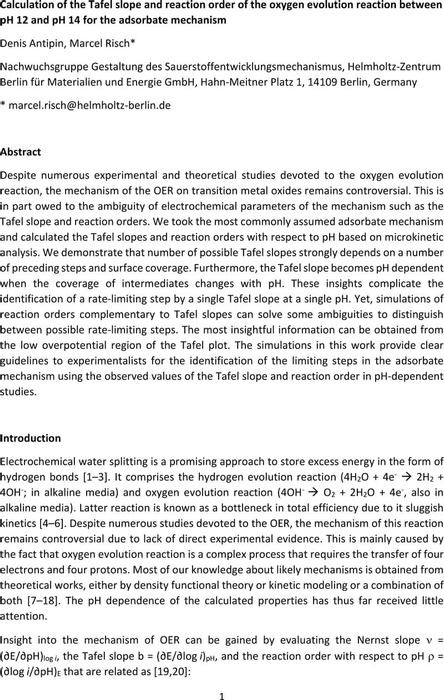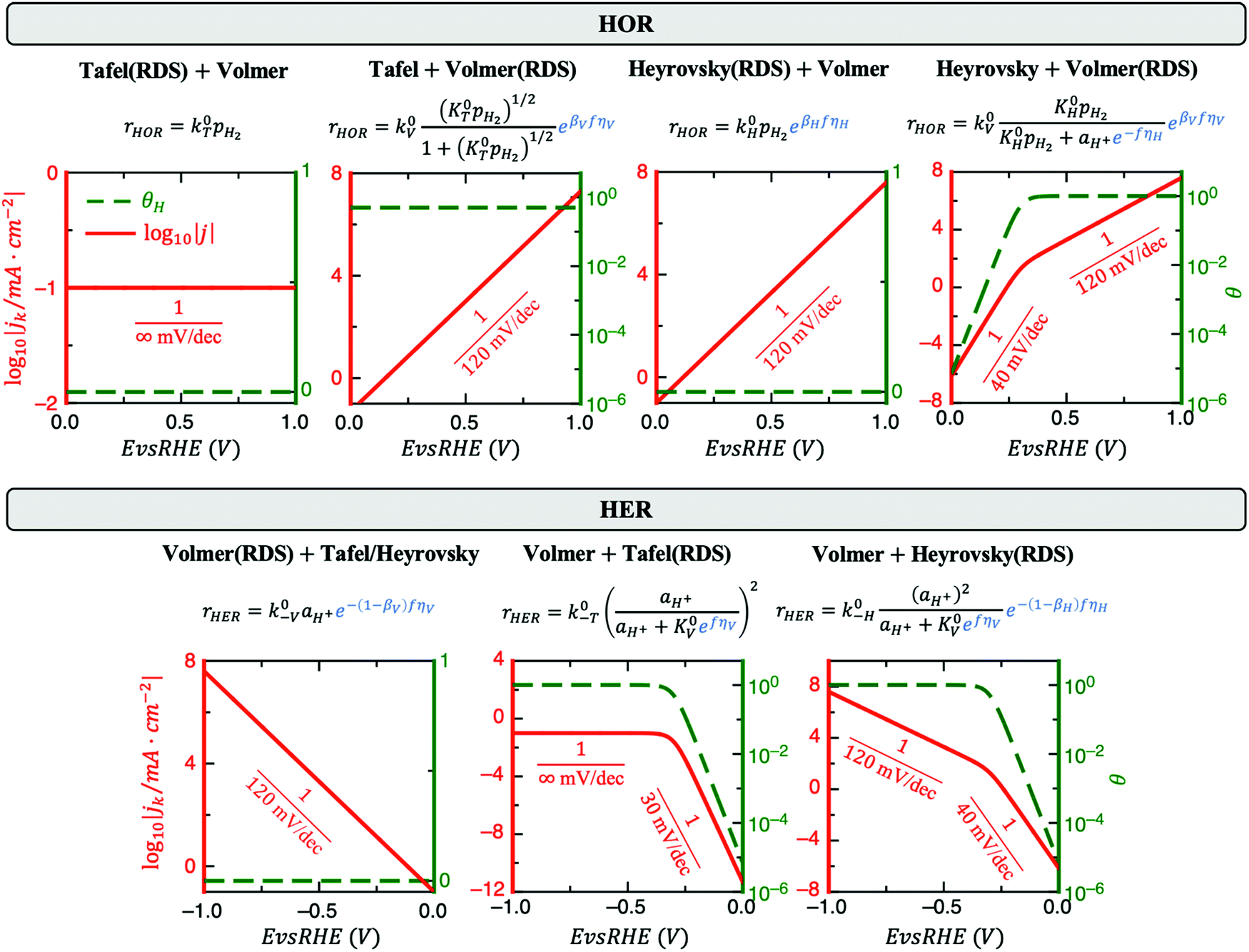
Despite numerous experimental and theoretical studies devoted to the oxygen evolution reaction, the mechanism of the OER on transition metal oxides remains controversial. This is in part owed to the ambiguity of electrochemical parameters of the mechanism such as the Tafel slope and reaction orders. We took the most commonly assumed adsorbate mechanism and calculated the Tafel slopes and reaction orders with respect to pH based on microkinetic analysis. We demonstrate that number of possible Tafel slopes strongly depends on a number of preceding steps and surface coverage. Furthermore, the Tafel slope becomes pH dependent when the coverage of intermediates changes with pH. These insights complicate the identification of a rate-limiting step by a single Tafel slope at a single pH. Yet, simulations of reaction orders complementary to Tafel slopes can solve some ambiguities to distinguish between possible rate-limiting steps. The most insightful information can be obtained from the low overpotential region of the Tafel plot. The simulations in this work provide clear guidelines to experimentalists for the identification of the limiting steps in the adsorbate mechanism using the observed values of the Tafel slope and reaction order in pH-dependent studies.

PDF) Calculation of the Tafel slope and reaction order of the oxygen evolution reaction between pH 12 and pH 14 for the adsorbate mechanism

DFT calculation of the OER reaction mechanism to elucidate intrinsic

Inorganics, Free Full-Text

Potential-dependent OER performance on dual-Fe-Ir sites by grand canonical based constant charge method - ScienceDirect

PDF) Revisiting electrocatalytic oxygen evolution reaction microkinetics from a mathematical viewpoint: implicit rate expression, ambiguous rate constant, and confusing overpotentials

Research Progress of Oxygen Evolution Reaction Catalysts for Electrochemical Water Splitting - Liu - 2021 - ChemSusChem - Wiley Online Library

Potential-dependent OER performance on dual-Fe-Ir sites by grand canonical based constant charge method - ScienceDirect

Modulation to favorable surface adsorption energy for oxygen evolution reaction intermediates over carbon-tunable alloys towards sustainable hydrogen production

The determination of the HOR/HER reaction mechanism from experimental kinetic data - Physical Chemistry Chemical Physics (RSC Publishing) DOI:10.1039/D1CP04134G

Simulated behavior of the Tafel relation for the hydrogen evolution





